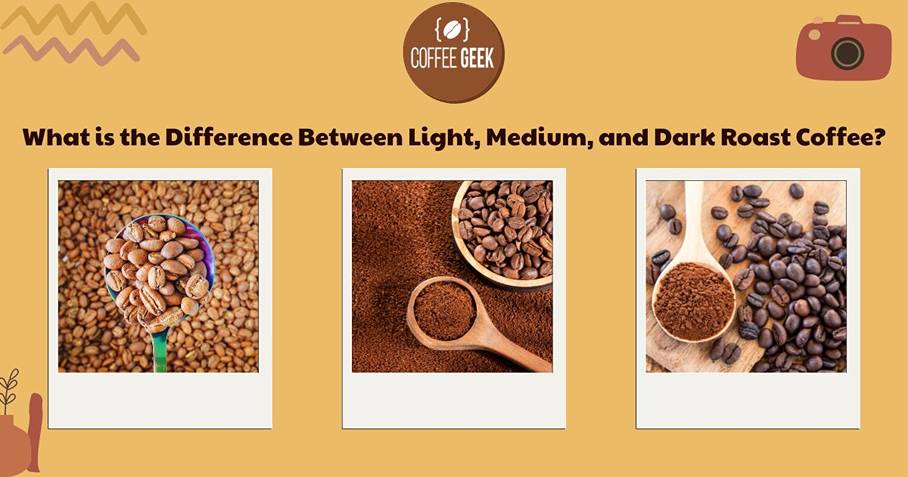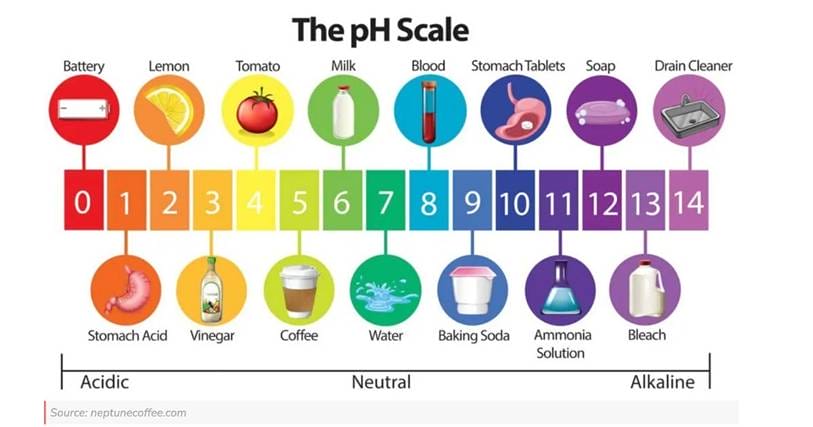For those who share a love for the delightful aroma and taste of a freshly brewed cup of coffee, understanding the various aspects of this staple beverage is simply an extension of this passion.
They should take into consideration factors such as its acidity, flavor, and the difference between light, medium, and dark roasts.
Particularly, one question that has been making rounds in circles of coffee enthusiasts is whether dark roast coffee is less acidic.
This article aims to explore this query, entering a realm where coffee roasting meets science, and as we traverse this journey, let’s not let our enthusiasm brew cold.
- What is the Difference Between Light, Medium, and Dark Roast Coffee?
- Does the Acidity Level of Coffee Vary with the Roasting Level?
- What is the Effect of Coffee, Especially Dark Roast, on Stomach Acid?
- Are There Less Acidic Coffee Options Available?
- Does the Caffeine Content Differ Between Roasts?
- People Also Ask
What is the Difference Between Light, Medium, and Dark Roast Coffee?
Is Dark Roast Coffee Less Acidic?
At its core, coffee roasting involves processing the green coffee beans in a roaster at varying temperatures, dictating the outcome of light, medium, or dark roasts.

Light roast beans, as the term suggests, are less roasted, preserving most of the bean’s original characteristics, whereas dark roast coffee is subjected to higher temperatures for a longer period, resulting in a darker, often oily appearance.
How the Roasting Process Affects the Coffee Beans
The roasting process unquestionably has a significant impact on the beans.
It triggers a series of chemical reactions that alter the bean’s cell structure, affects the sweetness, and can influence the acidity, ultimately contributing to the coffee’s trademark flavor and aroma.
The Influence of Roast Level on Flavor and Aroma
Roast level plays a pivotal role in the coffee’s taste and aroma.
Light roast beans are characterized by a more acidic, yet complex and fruity flavor, while dark roast coffee beans may often present a bitter taste accompanied by a more robust aroma – a result of the longer roasting process.
| Property | Dark Roast Coffee | Notes |
|---|---|---|
| Acidity Level | Lower | Dark roast coffee tends to have lower acidity compared to light or medium roasts. |
| Flavor Profile | Bold and Robust | Dark roast coffee often features bold, smoky, and rich flavors, which can mask perceived acidity. |
| pH Level | Slightly Lower | The dark roasting process may contribute to a decrease in pH, resulting in a less acidic coffee. |
| Bitterness | Increased | Dark roast coffee can have a more pronounced bitter taste, which may overshadow any remaining acidity. |
| Caffeine Content | Slightly Lower | Contrary to common belief, dark roast coffee may have slightly less caffeine than light roasts due to longer roasting times. |
| Oil on Beans | More Pronounced | Dark roasts often have visible oil on the surface of the beans, contributing to a smoother, less acidic feel. |
| Popular Varieties | French Roast, Italian Roast | Examples of dark roast coffee varieties known for their lower acidity and intense flavors. |
Does the Acidity Level of Coffee Vary with the Roasting Level?
The Science behind Coffee’s Acidity
From chlorogenic acid to citric acid, various types of acid exist in coffee. Their presence largely influences the beverage’s overall acidity.
When it comes to understanding coffee’s PH level, one must remember that the acidity doesn’t merely refer to coffee’s PH but also to the bright and fruity flavor notes often found in lighter roasts.
Understanding Coffee’s PH Level

It’s important to clarify that when talking about the acidity of coffee, we are not necessarily referring to the PH level.
Coffee generally falls on the acidic spectrum, with a general PH balance between 4.5 and 6. However, dark roast may present a slightly more alkaline PH than its lighter counterparts.
How Roasting Affects the Acidity of Coffee
As the beans roast, some of the acidic compounds break down, reducing the overall acid amount in coffee.
As a result, it’s widely believed that dark roast coffee beans tend to be less acidic than light roast beans.
What is the Effect of Coffee, Especially Dark Roast, on Stomach Acid?
Linking Coffee and Acid Reflux Symptoms

For those who suffer from acid reflux or heartburn, drinking dark roast coffee can exacerbate your symptoms.
Coffee’s stimulating effect on the production of stomach acid has been identified as one of the potential triggers.
However, it doesn’t necessarily mean you can’t enjoy coffee anymore. Making considerate choices about the roast type and brewing method may help.
The Impact of Coffee on Stomach Acid Levels
Some studies have suggested that dark roast coffee may be easier on the stomach as it stimulates less acid production compared to lighter roasts.
Dark roasting results in the formation of a compound called N-methylpyridinium that curbs gastric acid production.
Relevance of Coffee Roasts and Stomach Acid Concerns
If you’re experiencing stomach issues, switching to a darker roast may help manage these concerns, as the lesser acidic nature posted by dark roast may appear more stomach-friendly.
However, it should be noted that stomach acid reaction varies individually and can depend on various factors, including diet and individual sensitivity.
Are There Less Acidic Coffee Options Available?
Options for Low-Acid Coffee
From cold brew to specialty coffee brands advertising low-acid coffee options, several alternatives exist. Cold brewing can successfully reduce coffee’s acid content, offering a smoother, less acidic brew.
Dark Roast Coffee: A Potential Low-Acid Option?
Dark-roasted ground coffee is generally accepted as a potentially low-acid option.

The longer roast duration breaks down more acid, making the coffee less acidic. But it doesn’t take away all the acid.
For some, it may also be tolerable, given that dark roast may be milder on stomach acid levels.
Brewing Techniques to Reduce Coffee Acidity
You can experiment with brewing techniques too. For instance, adding a pinch of baking soda during brewing can considerably reduce coffee acidity.
Does the Caffeine Content Differ Between Roasts?
Understanding the Effect of Roasting on Coffee’s Caffeine Level
The roasting process has little impact on the coffee’s caffeine content.
It’s a misconception that dark roasting decreases the amount of caffeine. Despite roasting at high temperatures, coffee beans retain their caffeine content relatively intact.

Comparing Caffeine in Dark Roast Coffee vs Light Roast Coffee
While it’s true that dark roasting doesn’t significantly reduce the caffeine amount, there is a subtle difference in caffeine content when comparing dark roast and light roast coffee.
Interestingly, by measure, light roasts do contain slightly more caffeine due to their denser nature.
The Misconception of Caffeine and Acidity in Coffee
Contrarily to common belief, caffeine is not particularly acidic. The notion that stronger coffee or espresso has more acid simply because it’s potent or bitter is a misconception.
Coffee’s acidity is dependent on several factors, with roast level and brewing method playing significant roles.
People Also Ask
Is dark roast coffee less acidic the medium roast coffee?
Yes, dark roast is typically less acidic than medium roast coffee.
The longer roasting process of dark roast beans reduces the amount of acid in the coffee. However, this doesn’t mean it is completely devoid of acidity.
Does the way you’re brewing coffee change the amount of acid?
Yes, the brewing method can significantly influence the acidity of your cup of joe.
Generally, hot brewing methods result in more acidic coffee than cold brewing, since steeping coffee grounds for 12 to 24 hours at cooler temperatures can produce lower acidity coffee.
What does it mean when coffee is low-acid? Are low-acid coffee options better for my digestion?
Low-acid coffee means that the coffee has less acid compared to others.
If you are prone to digestive issues like reflux or gastritis, drinking dark roast with low acidity may be gentler on your stomach cells to produce less gastric acid, and potentially less irritating to your digestive system.
Can medium roast coffee be low-acid?
Just because it’s medium roast, doesn’t mean it can’t be low-acid. Any type of coffee can technically be low-acid, it largely depends on the growing conditions, brewing method, and individual coffee types.
But generally, dark roasts usually contain slightly less acid than medium ones.
What can I do if I want to enjoy coffee but the acid gives me digestive issues?
If acid in coffee gives you digestive problems, you may want to try drinking dark roast or specifically labeled low-acid coffee blends.
Also, cold brewing can result in a brew with less acid than hot brewing methods.
Does the flavor profile of coffee change based on the acidic content?
Yes, the acidity level of coffee can greatly affect its flavor profile.
Coffees with high acidity can have bright, citrus flavors that resemble orange juice, while when you’re drinking low-acid coffees often have a milder, more bland flavor.
How does the acidity of coffee influence its unique flavors?
Acidity in coffee can add unique flavors and an “awaken” quality that can enhance the overall taste.
It can give coffee a certain tangy or citrusy flavor that can make your morning routine more exciting.
Can I still get the health benefits from coffee if it has less acid?
Yes, a lower acid coffee doesn’t necessarily mean it’s less beneficial to your health.
Coffee contains antioxidants which can have health benefits, regardless of its acidity levels. Dark roast coffees may also contain slightly less caffeine than light or medium roasts.
What are some other factors that affect the acidity of coffee?
The acidity of coffee is influenced by various factors including brewing temperature, brewing method, origin of the coffee bean, type of bean, and roast level.
For instance, brewing coffee at higher temperatures, above 200 degrees Fahrenheit, can increase its acidity.
Are there related articles or resources where I can learn more about the acidity in coffee?
Absolutely! You’ll find a wealth of information online related to the topic of coffee acidity.
Many coffee blogs and forums provide in-depth discussions about low-acidity coffee options, the difference in coffee acidity by roast level, and brewing tips for those who want a less acidic cup.
So, keep exploring to learn more about your favorite morning brew!

